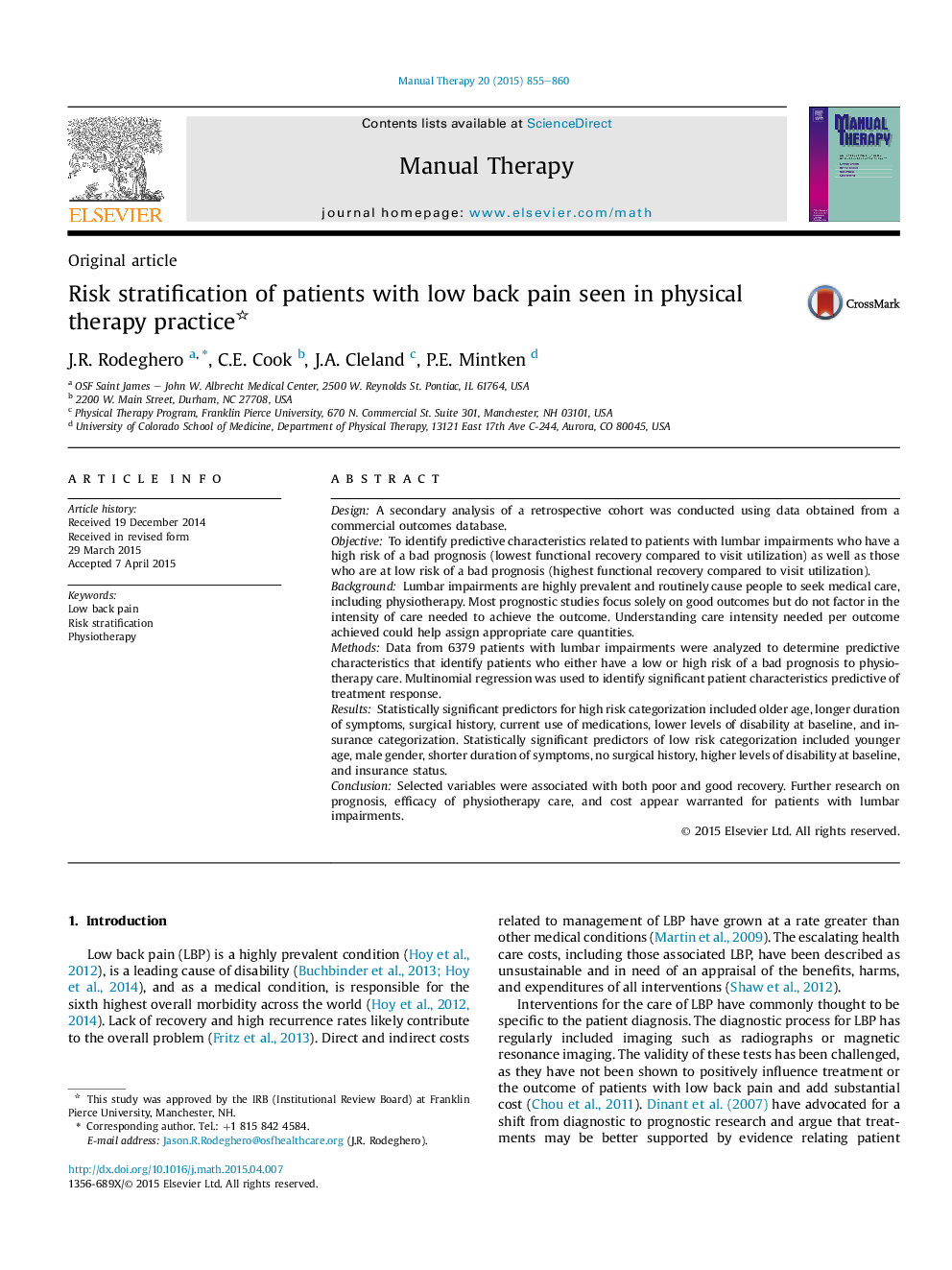| Article ID | Journal | Published Year | Pages | File Type |
|---|---|---|---|---|
| 2624763 | Manual Therapy | 2015 | 6 Pages |
•Demographic factors can predict both poor and good outcomes after physiotherapy.•This exploratory study has the capacity to help modify physiotherapy intensities.•Insurance type, duration of symptoms and past surgery are strong predictors of outcomes.
DesignA secondary analysis of a retrospective cohort was conducted using data obtained from a commercial outcomes database.ObjectiveTo identify predictive characteristics related to patients with lumbar impairments who have a high risk of a bad prognosis (lowest functional recovery compared to visit utilization) as well as those who are at low risk of a bad prognosis (highest functional recovery compared to visit utilization).BackgroundLumbar impairments are highly prevalent and routinely cause people to seek medical care, including physiotherapy. Most prognostic studies focus solely on good outcomes but do not factor in the intensity of care needed to achieve the outcome. Understanding care intensity needed per outcome achieved could help assign appropriate care quantities.MethodsData from 6379 patients with lumbar impairments were analyzed to determine predictive characteristics that identify patients who either have a low or high risk of a bad prognosis to physiotherapy care. Multinomial regression was used to identify significant patient characteristics predictive of treatment response.ResultsStatistically significant predictors for high risk categorization included older age, longer duration of symptoms, surgical history, current use of medications, lower levels of disability at baseline, and insurance categorization. Statistically significant predictors of low risk categorization included younger age, male gender, shorter duration of symptoms, no surgical history, higher levels of disability at baseline, and insurance status.ConclusionSelected variables were associated with both poor and good recovery. Further research on prognosis, efficacy of physiotherapy care, and cost appear warranted for patients with lumbar impairments.
